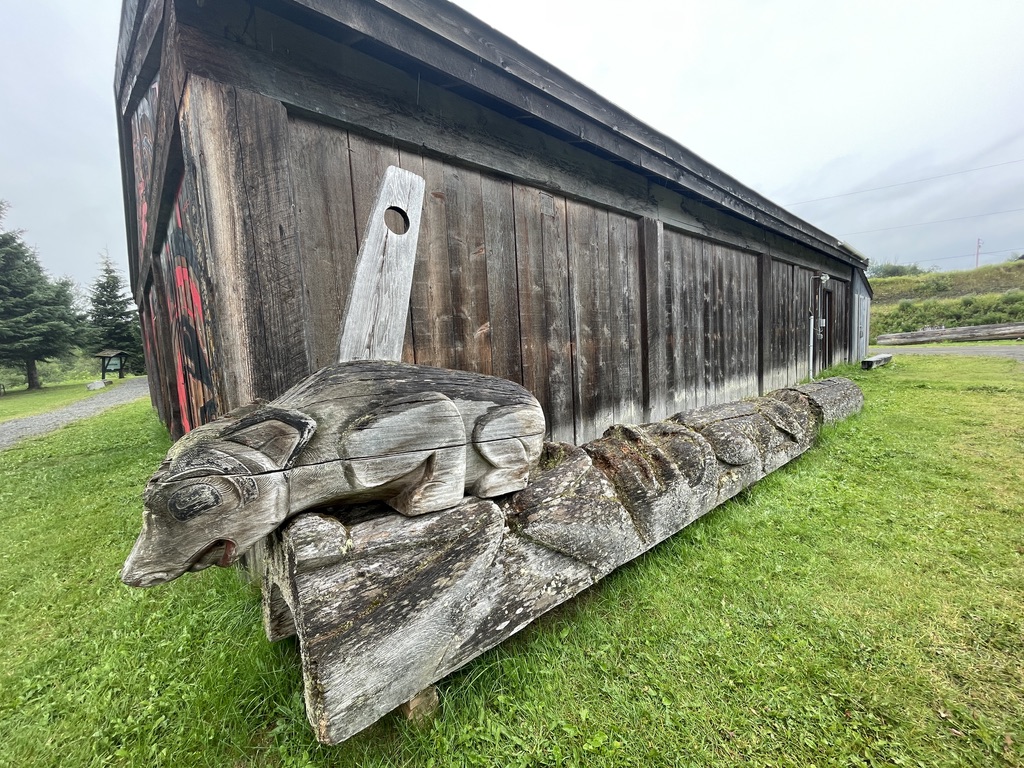One major project of reconciliation and decolonization across the globe is the repatriation of Indigenous cultural artifacts. In Canada, returning stolen, bought, or transferred material culture and heritage has been important to cultural revitalization efforts since the 1970s. In recent years, Indigenous cultural and political resurgence has intensified demands for community access to heritage artifacts. For instance, a Nisga’a delegation to the National Museum of Scotland in August 2022 demanded the return of a totem pole taken in 1929. Museum responses to community demands have varied, from an enduring sense of possessive colonial entitlement to global heritage, to an openness to revisioning their relationships with Indigenous communities through repatriation.
Our current project aims to shift the paradigm of repatriation, the simple returning of objects, to rematriation, a complex reintegration of cultural knowledge through community-based practices with the Witsuwit’en on their territories in Northwestern British Columbia. Specifically, we will focus on rematriation of knowledge around the Këgit pole to the Witsuwit’en, supporting the revitalization of artistic practices and renewal of intergenerational engagement in the arts. The Këgit pole is significant as the largest and oldest surviving Witsuwit’en pole, carved prior to the influx of white settlers to their lands in the latenineteenth century. Emblazoned with the story of C’idimsggin’is, the pole represents the connection of the Likhsilyu (Small Frog Clan) to the spirit of the land.
Quick Links

Indigenous artifacts
The project will generate curricular resources and broader community awareness of cultural dispossession and the global trade in Indigenous artifacts and the current need for not simply repatriation of knowledges and artifacts but the further development of approaches to rematriation which pay attention to the needs of the local community.
The Kegit Pole
This project presents a unique opportunity to engage in decolonial research and rematriation activities that is both original and significant to the Witsuwit’en, Indigenous peoples more generally, and academic researchers across a range of disciplines. The Këgit pole itself is singularly important to the Witsuwit’en community. It is the oldest Witsuwit’en pole in existence, and the only surviving pole from the historic Hagwilget village site where the community gathered in the summers to conduct balhats (traditional governance feasts) and fishing. It is also the largest Witsuwit’en pole on record. In the period, Catholic missionaries sought to suppress traditional forms of Witsuwit’en cultural expression, coercing community members to assimilate to white settler norms and rupturing the transmission of intergenerational knowledge. As a result, there are few practicing Witsuwit’en carvers today and limited knowledge of distinct Witsuwit’en carving traditions. Studying the Këgit pole provides a unique opportunity to rejuvenate these distinct Witsuwit’en carving traditions.

Research
Our collaboration will bring together a new team of researchers to conduct a five stage, multi-sited project, bridging museum archival research and community based research in the Witsuwit’en villages of Hagwilget and Witset, as well as the settlements of Hazelton and Smithers. The archival research will focus on the current site of the Kegit pole, the Quai Branly Museum in Paris, France.
Critical Literature
A longstanding critical literature has exposed the colonial impetus underpinning the drive to collect Indigenous artifacts and present them to Western audiences (Price 2001; Mawani 2004; Henare 2005; Diaz-Andreu 2007; Hamilton 2010). Of course, the relocation of objects such as totem poles displaced them from Indigenous cultural contexts, resituating them within Western cultural institutions (Jonaitis 1989; Morphy 2019). Scholars have linked Western collections to the rise of capitalist practices of cultural consumption (Belk 1995; Root 1996); however, collectors were also often inspired by critiques of the rationalist Western mentalities underpinning capitalism and imperialism and by a desire to reconnect to subconscious drives and more-than-human nature through the talismanic qualities of Indigenous artifacts such as totems (Cowling 1978; Jonaitis 1981; Jordan 2008; Power 2008; Conley 2013a, 2013b, 2017; Dickson 2014). For instance, French Surrealist collectors, such as Andre Breton, were inspired by a belief that “primitive” art objects were “endowed with an expressive power conducive to arousing the emotions which allow us access to knowledge of a different sort” (Mauzé 2006, 17). These anti-rationalist politics, while based in a radical critique of twentieth-century Western culture, nonetheless remained self-involved and disconnected from the struggles of colonized peoples and reproduced the colonial dynamic whereby Indigenous artifacts were appropriated to serve the aims of Western cultural projects (Antle 2001; Townsend-Gault 2013; Tythacott 2014; Antle 2015; Antle and Conley 2015).

